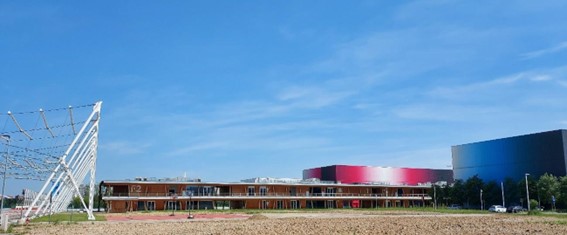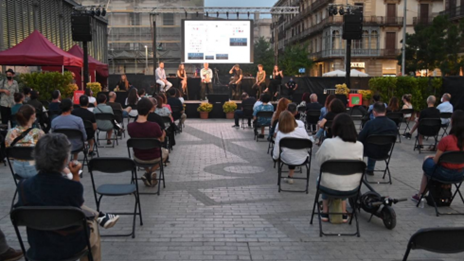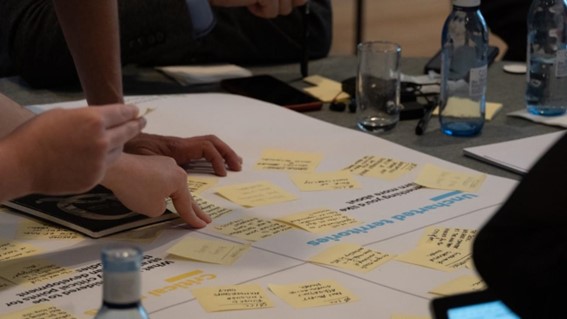The design and construction of Thematic Open Innovation Ecosystems that can be sustainable in the long term in an area undergoing urban transformation, poses a number of challenges, which have been identified and analysed in the T-Factor project. To this end, a study of different use cases across Europe and a series of in-depth interviews have been carried out, trying to identify commonalities and lessons learned.
But, for laying the groundwork... What do we mean when we talk about Open Innovation? Open innovation is often seen as a kind of socio-technical system in its environment, (with budgetary constraints, specific legislation, etc.) in which users or actors collaborate voluntarily to develop innovations. One of the keys to these ecosystems is to involve the actors (companies, research centres, universities, etc.) voluntarily in order to find a common good that benefits not only them as individual actors, but also the community to which they belong. Participating actors are encouraged to share and use existing external knowledge instead of reinventing the wheel.
For these Open Innovation Ecosystems to be sustainable, it is necessary to look at it from different angles or points of view.
Establish a business model based on the financing scheme
If we focus on the business model, its legal form must be adapted to the final interests, and can take forms such as non-profit organizations, associations with a joint governance model, joint ventures... etc. This decision is directly related to financial sustainability. It must be taken into account that the objective is for this ecosystem to be sustainable over time, therefore it is necessary to be clear about the financing scheme that the ecosystem will adopt. In most cases, it has been adopted by the implementation of fees that the participating agents pay. These fees do not necessarily have to be the same for everyone, but can vary according to their involvement, the services they want to use, and may not even be "monetary", but rather through specific actions, something similar to "payment in kind", for example by participating in conferences, workshops, training activities...
Other sources of income may be European/national/regional R&I funding programmes, competitive or non-competitive. This option carries the risk of being dependent on governments and their strategic plans. Hiring space to third parties, sale of assets, consultancy services required by companies, etc. are also other possible ways of incomes.
A public or private management model for the physical space?
One issue to take into account to define the business model is the physical space where this ecosystem is to be established, as there are different approaches. The first one is that the space is public, or managed by the public administration, which rents or sells plots of land. In these cases, it is the administration who indicates the orientation of the space, which can be restricted to a specific type of activity, normally allied to political strategies. Investments to improve public transport, the infrastructure adjustment of common spaces... are usually guaranteed.
Another option is that the ownership of the land is private, in which case the owner company is the one that has to provide all the necessary infrastructures to make the offer attractive, it has to obtain the necessary agents to increase the engagement of other stakeholders and the investments in infrastructures, communication, accesses... are at its own expense. In these cases the business models must be clear to ensure the viability of the ecosystem.

Get collaborators by offering them valuable opportunities
If we analyse the vision of a stakeholder who is going to participate in these ecosystems, the question would be: How do I benefit? What does it offer me?
Firstly, belonging to a network of actors and collaborations with partners that might not be possible to reach individually. It facilitates new business opportunities. There are cases in which they offer start-up accelerators, training activities, calls for participation in projects based on challenges, and encourage different forms of knowledge transfer both to other agents and to society. In many cases these ecosystems have official certifications that open doors to certain types of projects and increase the prestige of their partners . It is also important to highlight that they are beginning to offer work environments not only as physical spaces (e.g. laboratories), but also virtual ones, as long as the nature of the work or projects allows them.
However, ecosystems do not only offer business-oriented services. Depending on where they are located, they often also offer a range of life-focused services, providing people working in them with essential day-to-day services, such as sports facilities, work-life balance measures, restaurants, mobility, etc.

And from the point of view of third parties, how do they benefit from these open innovation ecosystems?
There are different cases depending on the nature of these third parties. For companies with specific businesses, they can use services offered such as specialised consultancies, renting very specific and costly infrastructures that are not worth having as their own assets... For society in general, the advances achieved in research will be transferred to a greater or lesser extent to everyday life, either by the creation of new services, by the adoption of research results in new products or services, by the dissemination of knowledge at different levels...
Strategic keys and lessons learned
As we have seen, there are multiple options and point of views for configuring these Open Innovation Ecosystems, but also there are a few key ideas that we would like to highlight:
The first is to bear in mind that all the laboratories or ecosystems analysed have clear support or backing from public administrations, both at local and regional level, this explicit support translates into both financial support and strategy, forming part of the innovation and research ecosystem of the regions in which they are located. This ensures that their sustainability is maintained over time and that they can continue to work towards achieving their objectives.
In addition to this financial support, all of them have additional sources of income as mentioned above, but this other type of income source is more residual than that coming from public administrations, being their pillar of support.
The second idea is the importance of diplomacy in creating and maintaining systems. It is not only about identifying stakeholders, but also about attracting and retaining them. To be able to identify their needs, to bring them value through the proposal put forward, to try to speak their language, as in most cases the nature of the actors may be very different, technology companies, medical agents, public administrations... The ultimate goal must be to build and maintain a relationship of trust, involvement and mutual commitment. This is not a one-day job and requires a lot of backstage work and diplomacy to be taken into account.
Moreover, these types of innovation ecosystems tend to be quite transversal and disciplinary in nature, in which it is necessary to negotiate and discuss with departments from different administrations (and sometimes with different interests or strategies): science, art, culture, education.... It is precisely here where this diplomatic and compromise work is most necessary to try to align interests and strategies.
And the third common idea is to promote the following statement among all participants in the ecosystems: "COOPERATE to COMPETE". In a Coopetition-Based Open-Innovation ecosystems it is necessary to build trust between actors so that they can cooperate, grow, improve, and then also compete. We have found out that in these (open) collaborative ecosystems many of the partners or participants are initially reluctant to collaborate as they do not see the benefit in opening up their knowledge or dedicating their resources to collaborate with others. This is where an evangelization of cooperating to compete is needed so that they can see the long-term benefits of collaborating in the short term.
